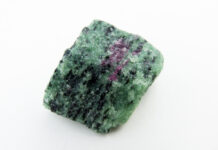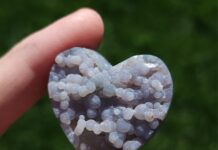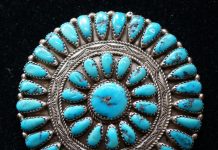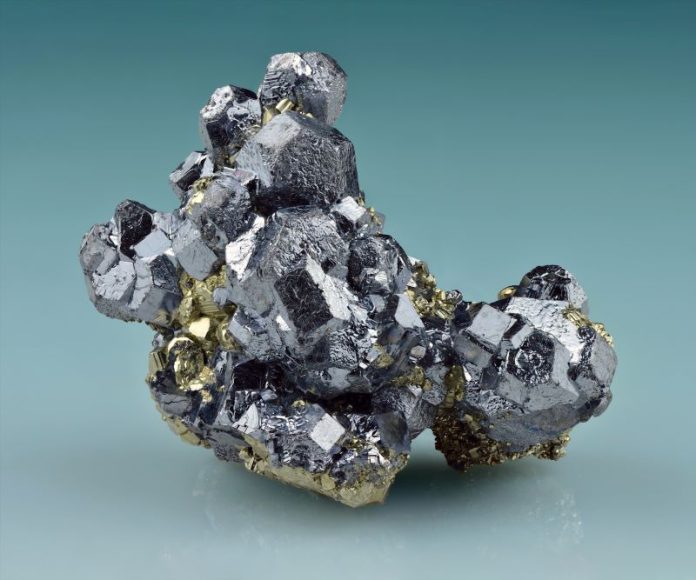
Galena mineral, in fact, a tiny crystal of galena (lead sulfide), once ruled the radio world as the key component in inexpensive and often homemade receivers as the first practically applied semiconductor material. At the dawn of commercial radio broadcasting in the 1920s, simple crystal radio receivers brought music and comedy programs, along with news and weather reports, into the homes of millions of American families.
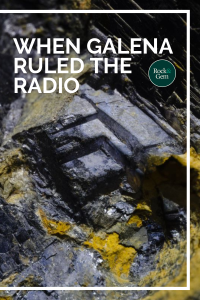
Natural Semiconductors
Semiconductors are solid materials with levels of electrical conductivity between those of conductive metals like copper and non-conductive insulators such as glass. Scientists began studying semiconductors in the 1830s. In 1874, German physicist Ferdinand Braun observed that electrical resistance in certain metal-sulfide crystals varied with the direction of the current. Braun also learned that the contact point between a thin wire electrode and a galena crystal could modify electrical current and produce what he called the “point-contact electrical-rectifier effect.”
Researchers who subsequently studied pyrite (iron disulfide), bornite and chalcopyrite (both copper iron sulfides), molybdenite (molybdenum disulfide), zincite (zinc oxide), and other mineral semiconductors eventually concluded that galena had the most desirable semiconductor properties.
Galena Mineral: The First Superconductor
The galena crystal lattice is built of a repetitive sequence of lead and sulfur atoms. Pure galena crystals consisting of just lead and sulfur function only as weak electrical conductors. But galena almost always contains traces of such metals as copper and silver that create an excess or deficiency of free electrons at regular lattice sites. These sites act as “electron traps” that allow electrons to move in one direction only.
Not all galena is a good semiconductor. The most desirable semiconductor crystals have specific levels of metal impurities and a crystallographic structure that enables surface areas to function as electrical rectifier contact points.
Galena Mineral in Radio
In 1900, American inventor Greenleaf Whittier Pickard first used galena crystals in simple radio receivers. These so-called “crystal sets” consisted of a long wire antenna, a tuning circuit with two concentrically positioned wire coils, a carbon-particle earphone and a pea-sized crystal of galena.
The galena mineral crystal performed two functions: it first converted alternating current into direct current; then it detected and separated the audio-wave component from the carrier-wave component of a radio-wave-induced microcurrent. Crystal set operators simply moved a flexible, pointed copper wire called a “cat’s whisker” across the galena crystal to locate the site that maximized the point-contact rectifier effect and the loudness of the audible earphone signal.
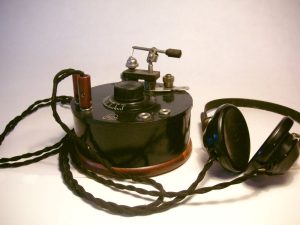
Wikimedia Commons
Crystal Sets
When commercial radio broadcasting began, the cost of battery-powered home radio receivers that employed crude vacuum-rectifier tubes and amplifiers was prohibitive. The only affordable alternative was the crystal set that could be bought ready-to-use for only a few dollars or easily built for even less from inexpensive components.
The galena mineral crystal in a crystal set was a small, irregular fragment of a larger crystalline mass. Weighing only a few grams, a semiconductor galena crystal cost about five cents and was readily available at scientific-supply houses and even many hardware stores. The cost was not that of the galena itself, which was mass-mined as the primary ore of lead, but from the expense of testing each crystal to make sure it could function as an electrical semiconductor.
By the late 1920s, an estimated 40 million crystal sets, by far the most popular type of radio receiver, were in use worldwide. But their heyday was cut short by the appearance of improved, mass-produced vacuum-rectifier tubes that sharply reduced the cost of battery-powered, amplified radio receivers.
While crystal sets were technically obsolete by 1930, they nevertheless remained popular, especially in rural regions that were still awaiting national electrification. Crystal sets even served as emergency radio receivers on many naval and merchant ships during World War II.
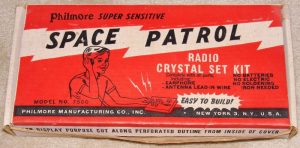
Wikimedia Commons
Galena’s Radio Legacy
The 1950s brought a huge resurgence of interest in crystal sets among hobbyists and as an educational tool. Crystal radio sets remain available today as both build-it-yourself kits and ready-to-operate receivers. Now, however, the “crystal” is a synthetic germanium diode—a far more effective semiconductor than galena.
Radios today are vastly improved and far more complex devices that utilize diodes, digital tuners, dipole antennas, integrated circuits and wireless connectors. But it is interesting to remember that commercial radio broadcasting got its start with millions of inexpensive crystal set receivers, each built around a tiny crystal of galena.
This story about galena mineral previously appeared in Rock & Gem magazine. Click here to subscribe. Story by Steve Voynick.


